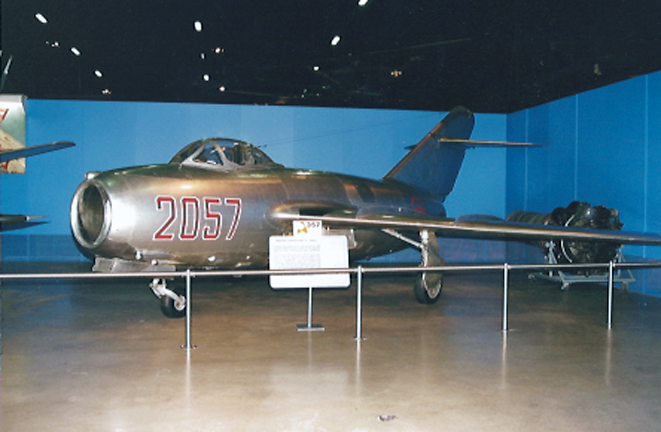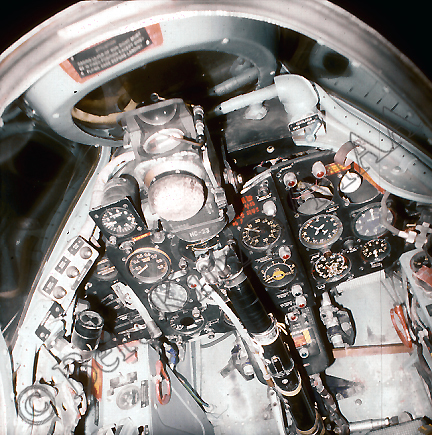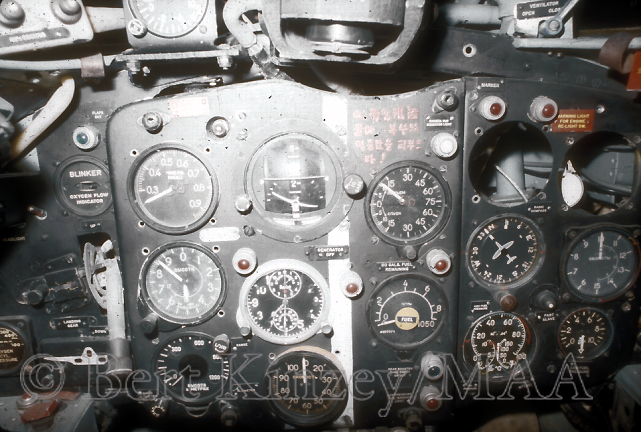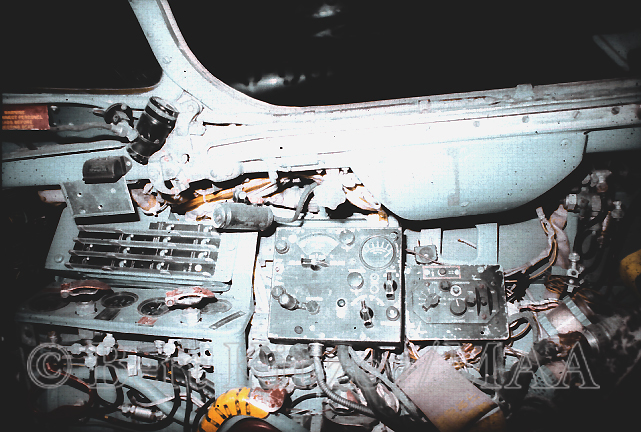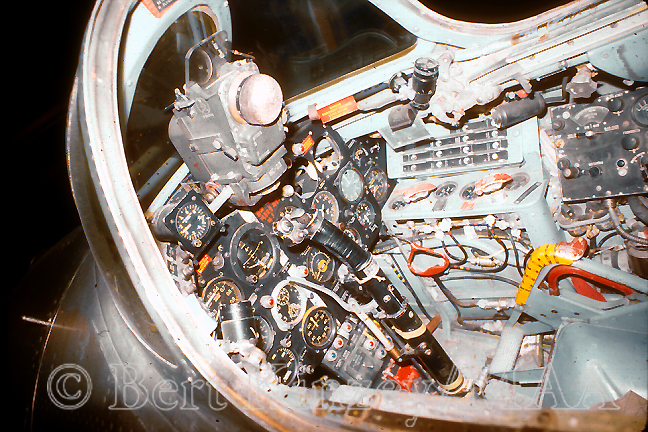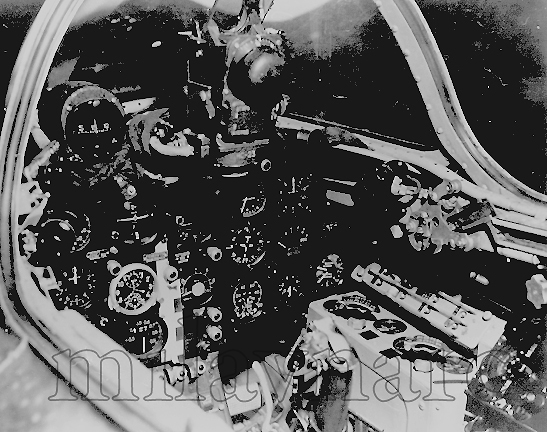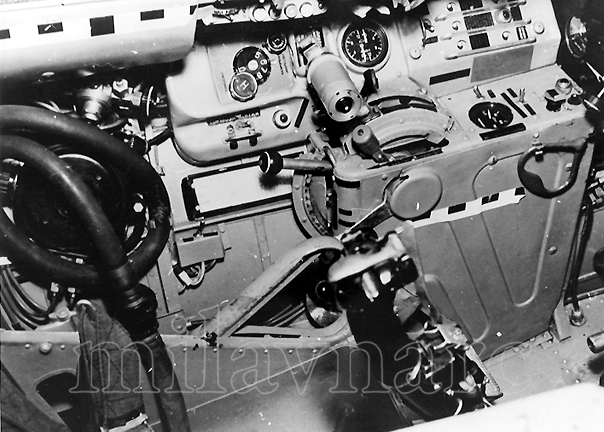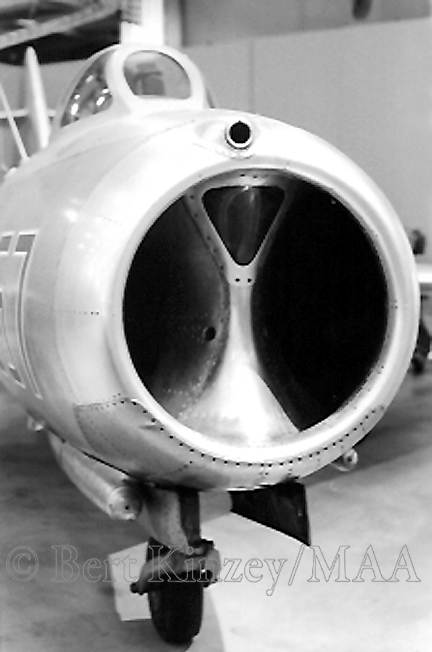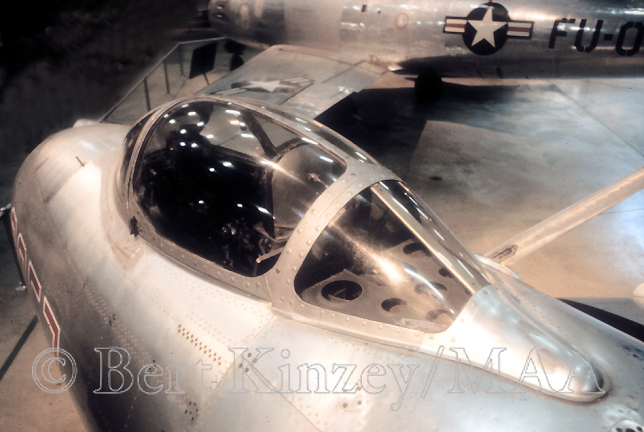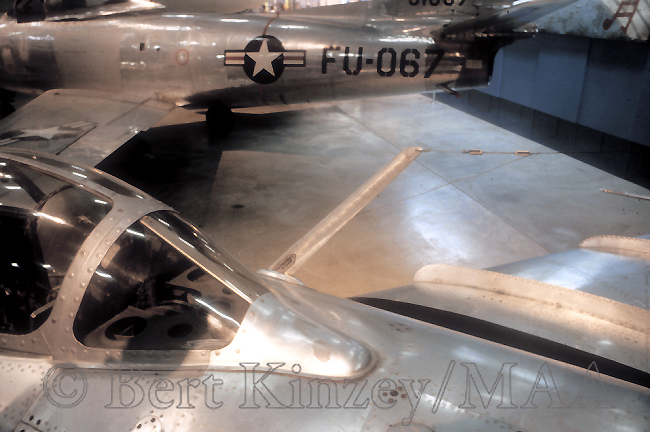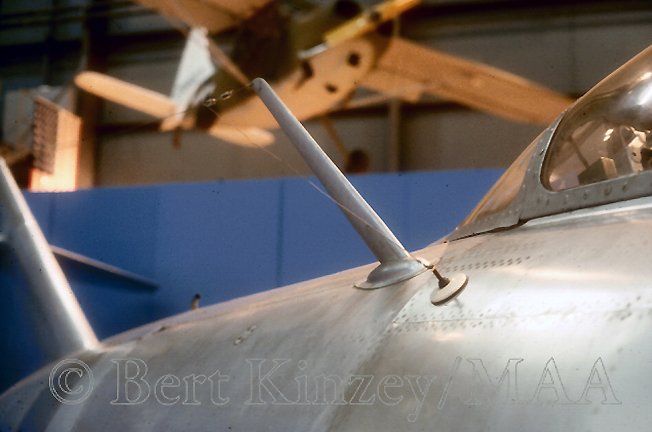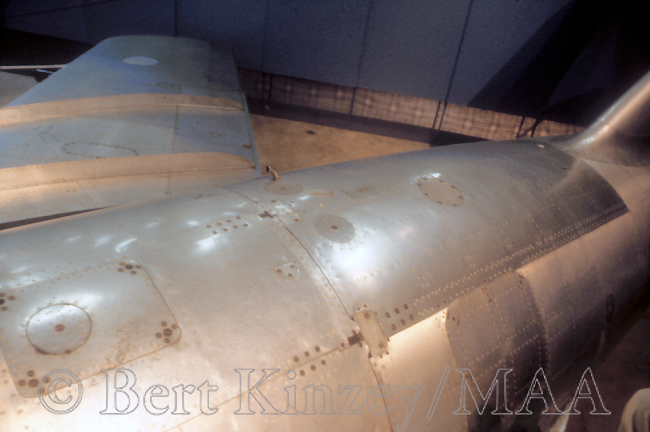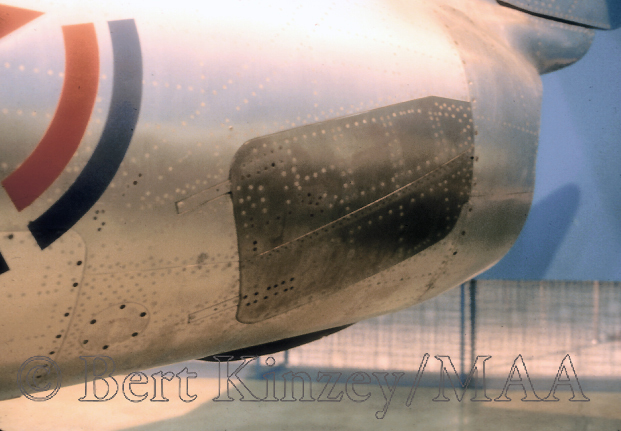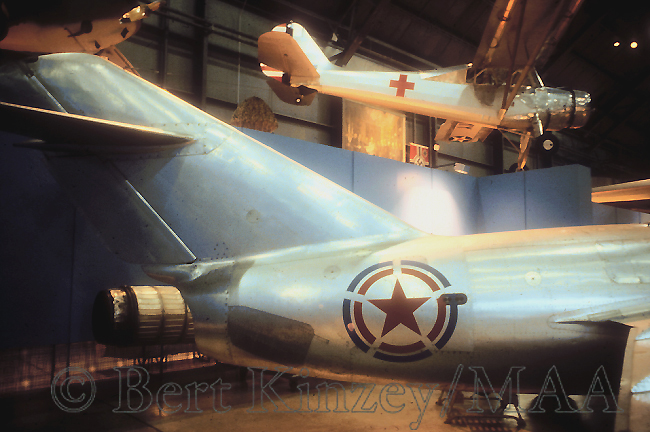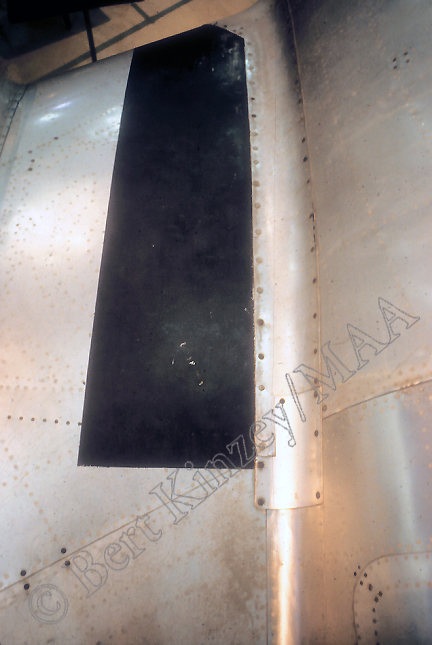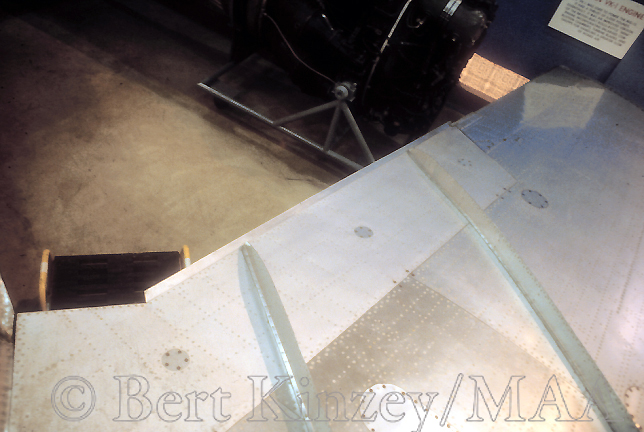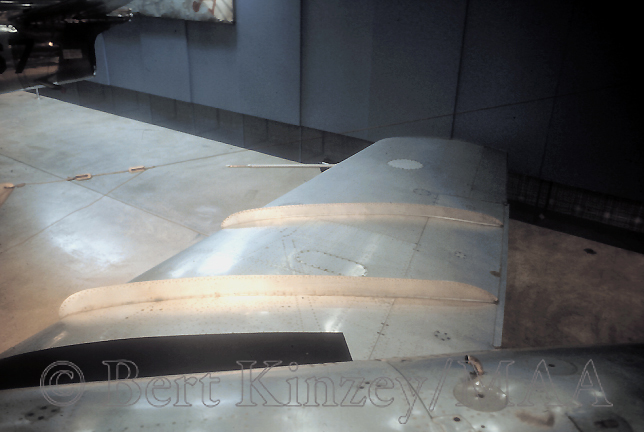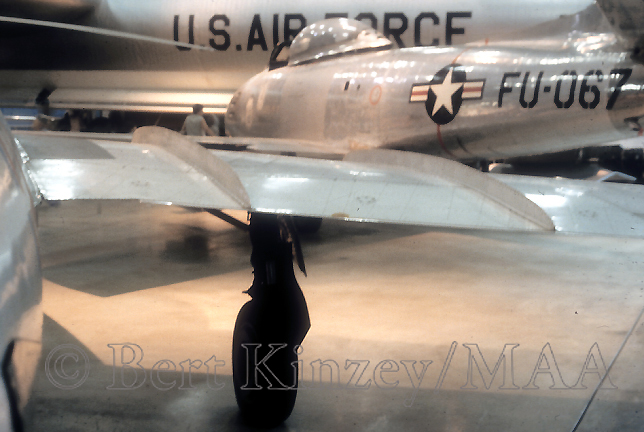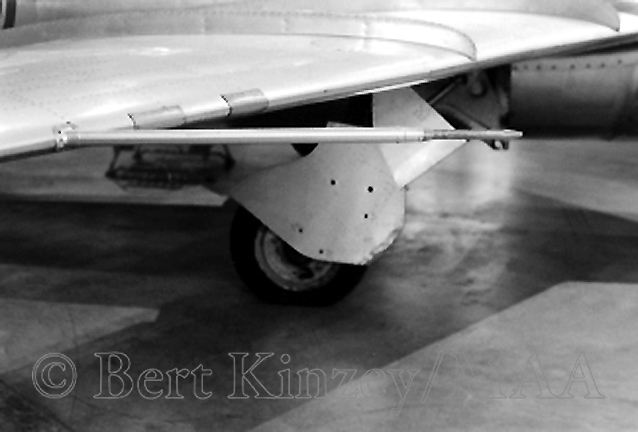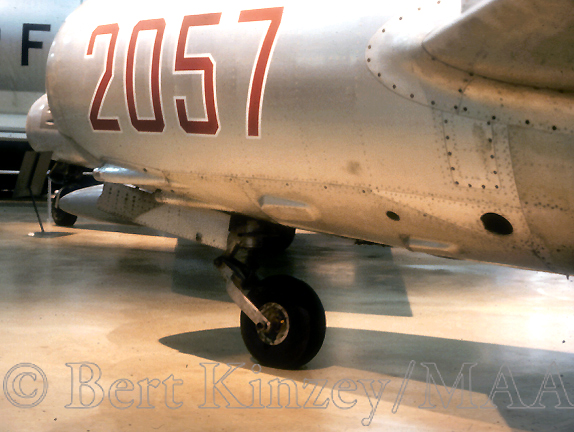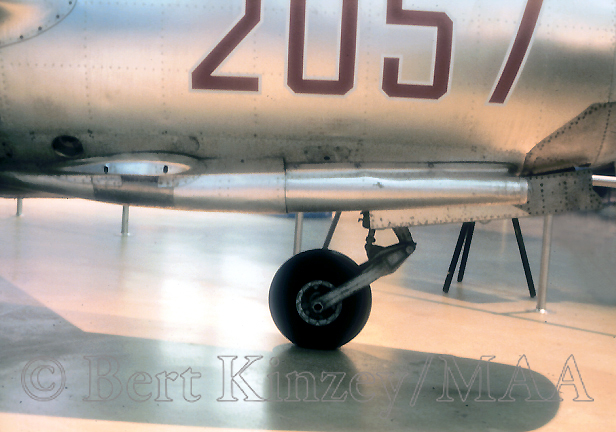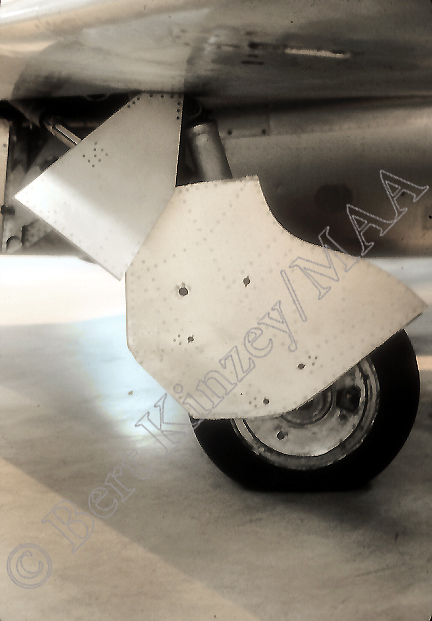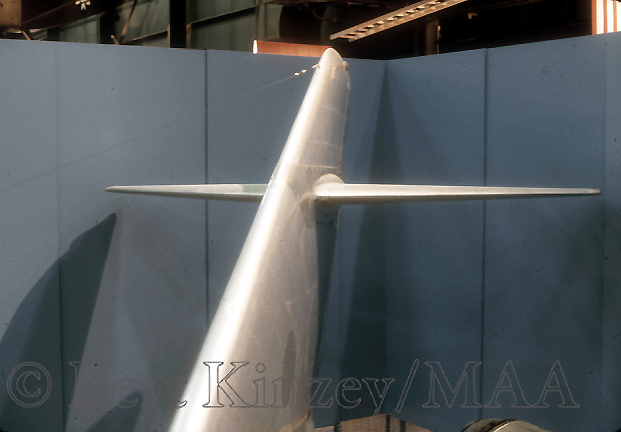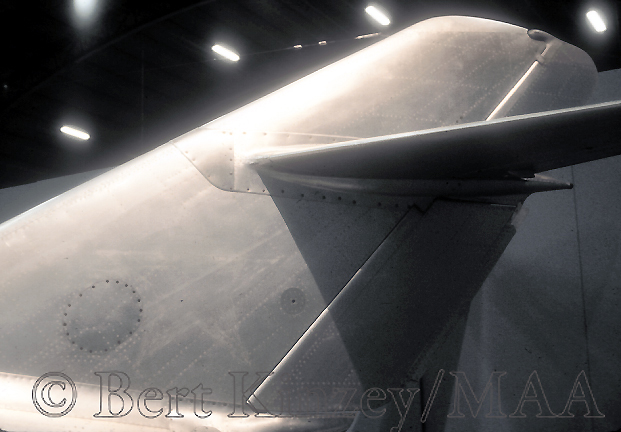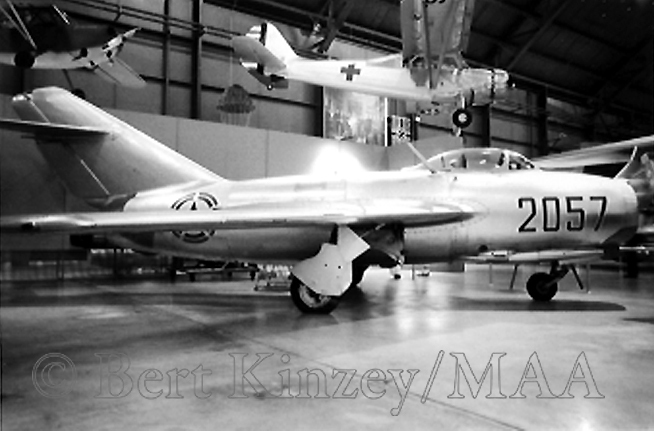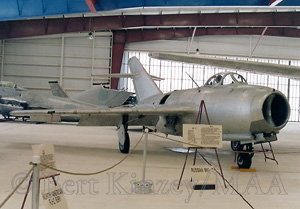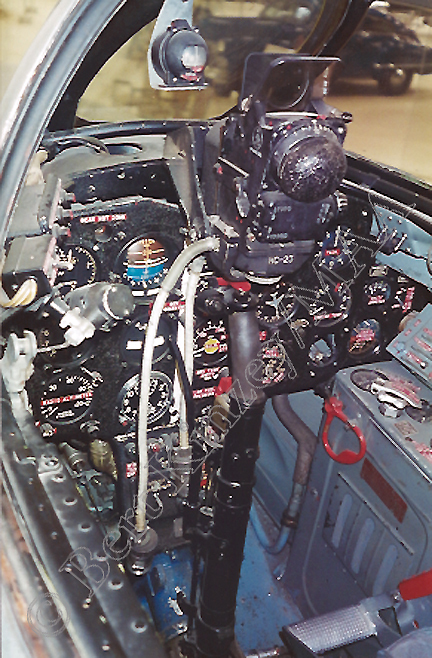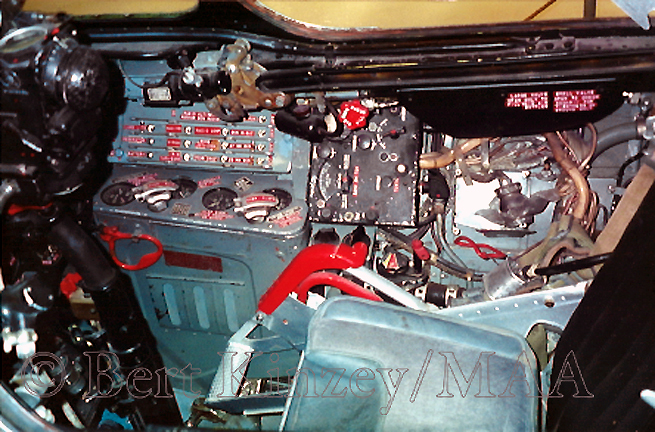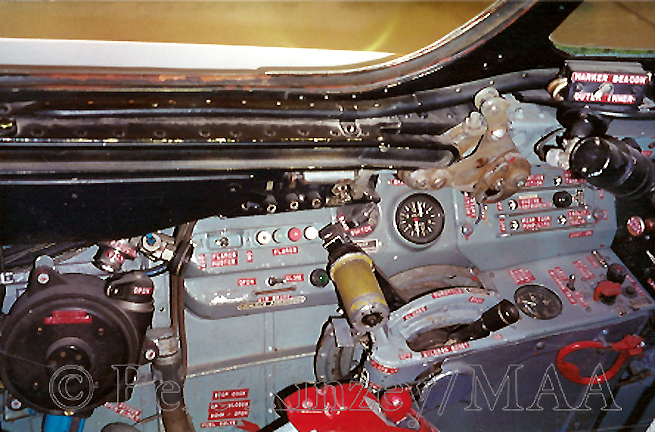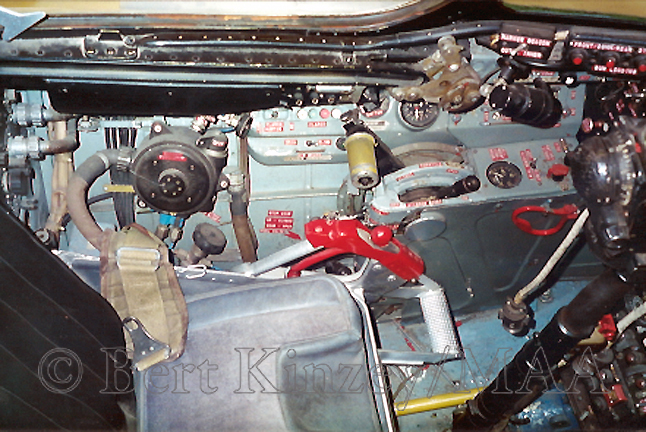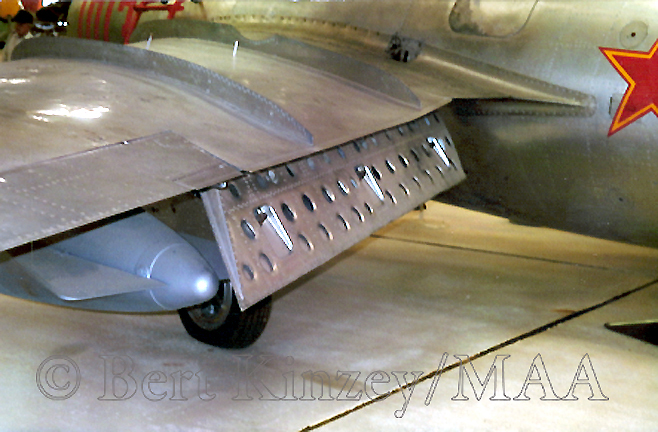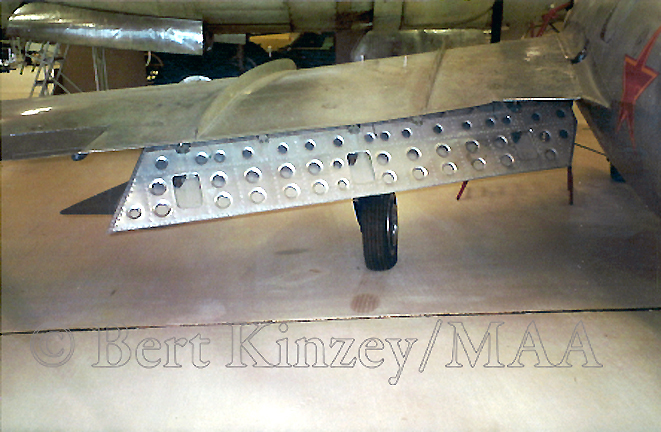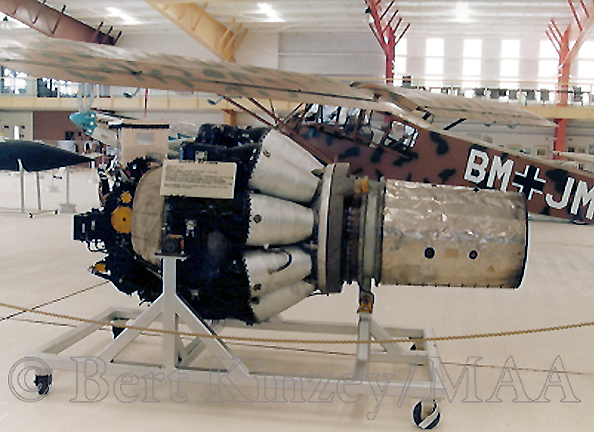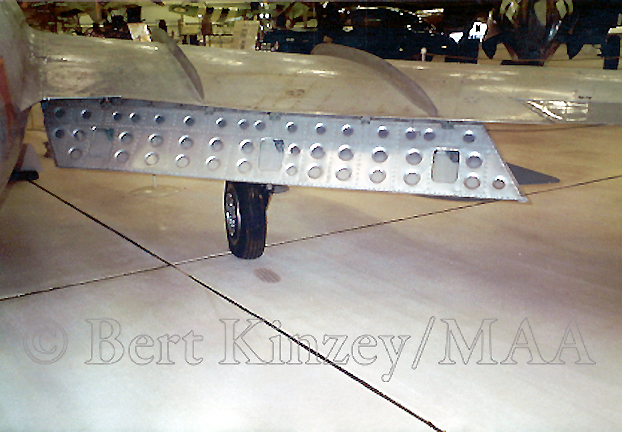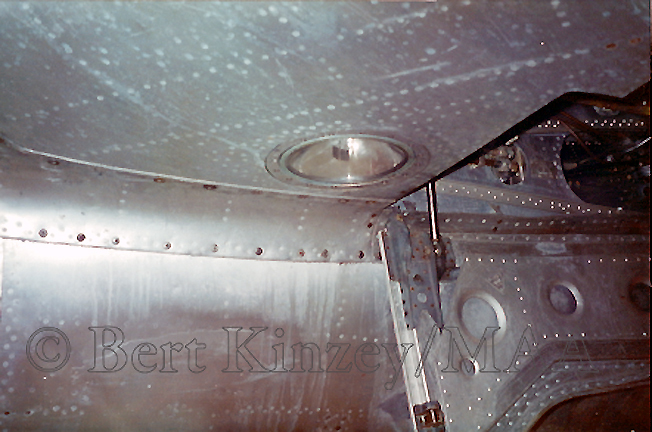Artem Mikoyan and Mikhail Gurevich had become the well respected leaders of the Russian MiG design bureau long before United Nations pilots encountered the MiG-15 in the skies over Korea. (The name, MiG, was derived from the first two letters of Mikoyan and the first letter of Gurevich.) The performance of the MiG-15, later given the reporting name Fagot by NATO, was a dramatic surprise to the West, and it was the first jet fighter to be mass produced by MiG. But for years to come, the dominance the MiG design bureau enjoyed in producing fighters for the Soviet Union and its client states was so complete that the name MiG became almost synonymous for any Russian fighter aircraft. The term MiG was even used, albeit erroneously, for those fighters produced by other design bureaus like Yakovlev, Sukhoi, and Lavochkin. Before production ceased, the MiG-15 would become the most widely produced jet aircraft of all time, with as many as 12,000 built by the Soviet Union and another 6,000 being built by other nations. This reflected the Soviet military philosophy of the time which emphasized massed numbers of simple, inexpensive, and easy-to-produce equipment. This contrasted with the more prevalent philosophy in the United States and other western powers which stressed having a fewer number of more sophisticated and capable items which came with a much higher price tag.
Benefiting from German research on swept wings, Mikoyan and Gurevich incorporated a wing with a 35-degree leading edge sweep into the MiG-15 design, but they turned to the British for the jet engine. To the shock of many in Russia, the liberal British Labour government willingly agreed to provide all of the design and technical information for the Rolls-Royce Nene turbojet engine along with a license agreement to build it in the Soviet Union. This was arguably the best turbojet engine in the world at that time. To this, Joseph Stalin remarked, “What fool would sell his enemy his secrets?” Likewise, the British Ministry of Defense and the Royal Air Force expressed their strong opposition to the sale of the engine to the Soviets. As originally built in the Soviet Union, the engine was designated the Klimov RD-45, but this later became the VK-1. Interestingly, but perhaps not surprisingly, the Soviets never paid the British the 207 million pound license fee. The RD-45 produced 4,850 pounds of thrust, but it was not fitted with an afterburner
Two prototypes were ordered on April 15, 1947, and given the designations S-01 and S-02 by MiG. The Soviet Military initially designated the aircraft the I-310. The first of these two prototypes made its initial flight on December 30, 1947. After initial testing and some mostly minor changes, the design was placed in production as the MiG-15, with the first production aircraft flying for the first time on December 30, 1948, exactly one year after the first flight by the prototype. Soviet fighter squadrons began receiving the aircraft the following year.
Standard internal armament for MiG-15 fighters included an NS-37 37-mm cannon mounted low inside the right side of the nose and two NS-23 23-mm cannons mounted low inside the left side of the nose. Ammunition was rather limited, with only eighty rounds being provided for each 23-mm cannon and forty rounds for the 37-mm cannon. This provided only 8.7 seconds of firing before all ammunition was expended. While the cannon armament was effective against ground targets and large bomber aircraft, the slow rate of fire of these cannons proved to be a disadvantage in the fast turning dogfights between jet fighters. However, if hits were scored with the large cannon shells, fewer were required to bring down an enemy aircraft than was the case with smaller machine gun ammunition. Clearly, the Soviets had learned the importance of using cannons that fired explosive shells. The U. S. Air Force was still using .50-caliber machine guns in most of its fighters, including most variants of the F-86 Sabre. On the MiG-15, single hardpoints under each wing could carry external fuel tanks, small bombs, or rocket pods. Throughout its operational service, many MiG-15s were modified with additional hardpoints and pylons under the wings, although the size and weight of stores carried was rather limited.
The MiG-15 had a standard horizontal tail consisting of a fixed horizontal stabilizer and a movable elevator. As would be learned during early jet development when speeds increased to just below the speed of sound, this arrangement did not provide for adequate control of the aircraft. To prevent the aircraft from becoming uncontrollable at these speeds, the speed brakes on the aft fuselage would automatically deploy when speeds in a dive approached Mach 1. Before long, all aircraft that were near sonic or supersonic would change to an all-flying tail where the entire tail surface moved to provide pitch control, but this important change was never made on the MiG-15 nor the subsequent MiG-17 Fresco.
Several experimental variants of the MiG-15 were developed, including one with swiveling cannons for ground attack missions and two limited all-weather interceptors fitted with radars. While some of the lessons learned from these experiments were incorporated into the standard MiG-15 production, none were ever placed in production as a new variant of the fighter.
From 1948 through 1950, 1,344 MiG-15s were produced before production changed to an improved version known as the MiG-15bis. (Bis means “second” in Russian.) Improvements included a more powerful Klimov VK-1 engine producing 5,950 pounds of thrust. This was an uprated Rolls-Royce Nene. Internal fuel capacity was increased from 330 gallons to 379 gallons. Additionally, larger external fuel tanks were designed to be carried under the wings to further increase the range of the MiG-15bis. The speed brakes on the aft fuselage were redesigned and increased in size, and there were upgrades to the radio and navigation equipment as well. The bumper fairing beneath the aft fuselage was also enlarged. To distinguish between the two variants, NATO changed the reporting name for the MiG-15 to Fagot A, while the MiG-15bis became the Fagot B. However, regardless of which variant was being discussed, the name Fagot was generally used for either version without a letter suffix.
As production of the MiG-15bis continued, minor changes were continually made. The landing light, originally mounted near the top of the air flow divider in the inlet, was moved to a location under the left wing near the root and was made retractable. The NS-23 cannons were replaced with NR-23 cannons on the left side of the nose. Aircraft with the NR-23s could be identified by the smaller fairings that covered the gun barrels and the addition of small blisters on the shell ejection slots for each cannon. The arrangement of the antenna wire was also changed during MiG-15bis production. In the new configuration, the antenna wire ran directly from the top of the vertical tail to a location on the fuselage near the antenna mast. Previously, the wire had been connected to the top of the antenna mast, and a second wire ran from the main wire into the fuselage to the radio equipment.
While there were many sub-variants of the MiG-15bis, as well as additional test airframes, one other major version should be noted, that being the MiG-15UTI two-seat trainer. This was given the reporting name Midget by NATO, and it served the Soviet Union and other nations well for many years as their primary jet trainer. Even after MiG-17 Frescos and MiG-19 Farmers replaced the MiG-15 as the front line fighters in Soviet squadrons, MiG-15UTIs remained the primary jet training aircraft. The Soviets produced no two seat versions of the later MiG-17 nor the MiG-19.
The two cockpits of the MiG-15 UTI were arranged in tandem with a canopy hinged on the right side covering the forward cockpit. A sliding canopy covered the rear cockpit. The addition of the second cockpit meant a reduction of the internal fuel capacity, so Midgets were often seen with external fuel tanks under the wings. The forward fuselage was also lengthened approximately 3.3 feet to provide room for the second cockpit. Internal armament usually consisted of only one 12.7-mm machine gun on the left side if the nose, but armament did vary, and some MiG-15UTIs did carry cannon armament.
MiG-15s were widely exported by the Soviet Union, but they were also built in large numbers by three other nations as well. China, Poland, and Czechoslovakia all built versions of the MiG-15. All of China’s single-seat MiG-15bis fighters were built by the Soviets, but the Chinese manufactured two-seat MiG-15UTIs as JJ-2s. Some of these were exported as Shenyang FT-2s. In Poland, PLZ built MiG-15s that were designated Lim-1s, and those fitted with a camera for the photographic reconnaissance role were designated Lim-1As. The MiG-15bis variant built in Poland was called Lim-2, while a camera-equipped sub-variant was the Lim-2R. SB Lim-1 and SB Lim-2 were the designations given to MiG-15UTI trainers built in Poland.
In Czechoslovakia, license-built MiG-15s were called S-102s, and MiG-15bis aircraft were designated S-103. The two-seat MiG-15UTIs that were built in Czechoslovakia were designated CS-102.
MiG-15s were exported to Afghanistan, Albania, Algeria, Angola, Bulgaria, Burkina Faso, Cambodia, China, Republic of the Congo, Cuba, East Germany Egypt, Finland, Guinea, Guinea-Bissau, Hungary, Iraq, Libya, Madagascar, Mali, Mongolia, Morocco, Mozambique, Nigeria, North Korea, North Vietnam, North Yemen, Pakistan, Romania, Somalia, South Yemen, Sri Lanka, Sudan, Syria, Tanzania, Uganda, and Yemen.
Never being a country to waste much militarily, the Russians converted some MiG-15s that had finished their service life into KS-1 Komet missiles. These were used as cruise missiles against shipping targets.
MiG-15s saw combat in numerous places throughout their operational life, but nowhere was this more important than in Korea. Although the existence of the type was known to Western intelligence, the appearance of the MiG-15 in the skies over Korea caught UN forces by surprise, not only by the mere presence of what was then the Soviet Union’s front line fighter, but by the superior performance of the aircraft. It clearly outclassed U. S. Air Force F-80 Shooting Stars and F-84 Thunderjets as well as U. S. Navy F9F Panthers and F2H Banshees. These four American aircraft were all first generation jet fighters with straight wings which limited their maximum speed capabilities. The MiG-15 clearly demonstrated the superiority of the swept wing, and the U. S. rushed the F-86 Sabre to Korea to counter the new threat. Over the course of the war, swept wing Sabers and MiG-15s mixed it up in what became known as “MiG Alley” along the border of Korea and China. Dog fighting had moved into the jet age.
AT THE NATIONAL MUSEUM
OF THE UNITED STATES AIR FORCE
Perhaps the most famous MiG-15 in the world today is the one on display at the National Museum of the United States Air Force in Dayton, Ohio. The aircraft was flown to South Korea by defecting pilot, Lieutenant No Kim-Sok, on September 21, 1953, where he received a $100,000 reward for delivering the aircraft to the United States. It was first tested and evaluated in Okinawa, and then it was moved to Wright-Patterson Air Force Base for additional testing. It was offered back to its “rightful owners” by the United States, but the Soviets, who had denied their participation in the Korean War, did not accept the offer. It was then given to the National Museum of the United States Air Force, where it remains on display to this day.
In August 1979, Bert Kinzey & Bill Slatton were given permission to photograph and measure the aircraft extensively and to analyze its details. While the aircraft is basically a MiG-15bis, there are clearly some features that indicate that some parts from a MiG-15 were substituted at some point in time, perhaps to repair damage. Both early and late MiG-15bis features can be found on the aircraft.
Most of the photographs in this set were taken by Bert Kinzey during that visit in August 1979. Most are in color, and were originally color slides. A few black and white supplemental photographs are also provided. Three additional black and white cockpit photos, taken by the U. S. Air Force, are also included in this photo set to show what the cockpit looked like when the aircraft was surrendered to the United States.
Detail & Scale thanks the director and staff of National Museum of the United States Air Force for their cooperation in obtaining these detail photographs.
MiG-15 Fagot A Data
Wingspan 33 feet, 1.5 inches
Length 33 feet, 1.75 inches
Height 12 feet, 2 inches
Wing Area 221.75 feet
Empty Weight 7,767 pounds
Max Weight 11,916 pounds
Max Speed 652 mph at sea level
Service Ceiling 49,900 feet
Range (Internal Fuel) 730 miles
Range (External Tanks) 1,025 miles
MiG-15bis Fagot B Data
Wingspan 33 feet, 1.5 inches
Length 33 feet, 1.75 inches
Height 12 feet, 2 inches
Wing Area 221.75 feet
Empty Weight 8,115 pounds
Max Weight 13,461 pounds
Max Speed 669 mph at sea level
Service Ceiling 50,850 feet
Range (Internal Fuel) 826 miles
Range (External Tanks) 1,566 miles
MiG-15UTI Midget Data
Wingspan 33 feet, 1.5 inches
Length 33 feet, 1.75 inches
Height 12 feet, 2 inches
Wing Area 221.75 feet
Empty Weight 8,210 pounds
Max Weight 11,905 pounds
Max Speed 559 mph at sea level
Service Ceiling 47,900 feet
Range (Internal Fuel) 590 miles
Range (External Tanks) 932 miles
Mig-15 Fagot, MiG-15bis:
AT THE NATIONAL MUSEUM
OF THE UNITED STATES AIR FORCE
OF THE UNITED STATES AIR FORCE
Mig-15 Fagot, MiG-15bis:
AT THE NATIONAL MUSEUM OF NAVAL AVIATION
AND U. S. MARINE CORPS MUSEUM
AND U. S. MARINE CORPS MUSEUM
The early MiG-15bis, currently on display at the National Museum of Naval Aviation in Pensacola, Florida, was previously displayed at the U. S. Marine Corps Museum at Quantico, Virginia. This photo set contains a few photos of this Fagot B in both locations taken by Bert Kinzey. While the aircraft now has its cannons removed, they were in place at the Marine Corps Museum, and the photos of these cannons with their fairings open are of particular interest.
Detail & Scale thanks Hill Goodspeed and the staff of the National Museum of Naval Aviation and Michael Starn at the Marine Corps Museum for making it possible to take these photographs.
Mig-15 Fagot, MiG-15bis:
AT THE WAR EAGLES AIR MUSEUM
This photo set was taken of the late MiG-15bis owned by the War Eagles Air Museum in Santa Teresa, New Mexico. The photographs were taken to show additional differences between early and late production MiG-15bis aircraft and to illustrate features not included in our other MiG-15 photosets.
The War Eagles Air Museum has a truly outstanding collection of beautifully restored aircraft, and they have always been cooperative with Detail & Scale. Several of their aircraft have appeared in our Detail & Scale Series of books. We strongly recommend this fine museum to everyone.
MiG-15UTI MIDGET:
AT THE WAR EAGLES AIR MUSEUM
his set contains detail photographs of the MiG-15UTI Midget at the War Eagles Air Museum in Santa Teresa, New Mexico. These photographs were taken by Bill Slatton and Bert Kinzey during two different visits to the museum. Most of the photos are in color, although a few are black and white. The War Eagles Air Museum has a truly outstanding collection of beautifully restored aircraft, and they have always been cooperative with Detail & Scale. Several of their aircraft have appeared in our Detail & Scale Series of books. We enthusiastically recommend this fine museum to everyone.

